This post provides tofu recipes based on flavours from three African countries that are super easy and allow you to try some unique flavours
Why Tofu
Tofu has become the poster child for plant-based cooking. It is a blank canvas that can absorb pretty much any flavour you give it. Plus, it comes in different textures and thickness, which provides so much variety. In West Africa, tofu is also traditionally made in certain parts of the region and known as awara or soya depending on where you are. They are seasoned according to the regional cuisine and sold as street snacks. For many vegans and vegetarians, tofu is a popular substitute for meat-based recipes. Don’t get me wrong, I am not saying tofu is a perfect substitute for meat because it is not. But, it does provide an opportunity to still enjoy some of the same flavours used to cook meat-based dishes.
What you will find in this Blog Post
Flavours across Africa are very varied and unique. This post is just showcasing six preparations of tofu that showcase and highlight flavours from East to West Africa. For more details on these recipes, make sure to check out their individual posts.
Senegalese-Inspired Vegan Yassa Tofu

This tofu dish gets its name from the incredibly popular Senegalese Yassa Dish. Yassa poulet (chicken) or Yassa poisson (fish) is made with lots of caramelized onions, chicken or fish marinated in lemon juice and spices. The dish is incredibly complex as it has sweet tones from the caramelized onions, with the tangy and sour flavours from the mustard and lemons. I believe it is actually one of the more accessible dishes I have created as it includes very few ingredients that you can find at many grocery stores.
Mishkaki Tofu Skewers
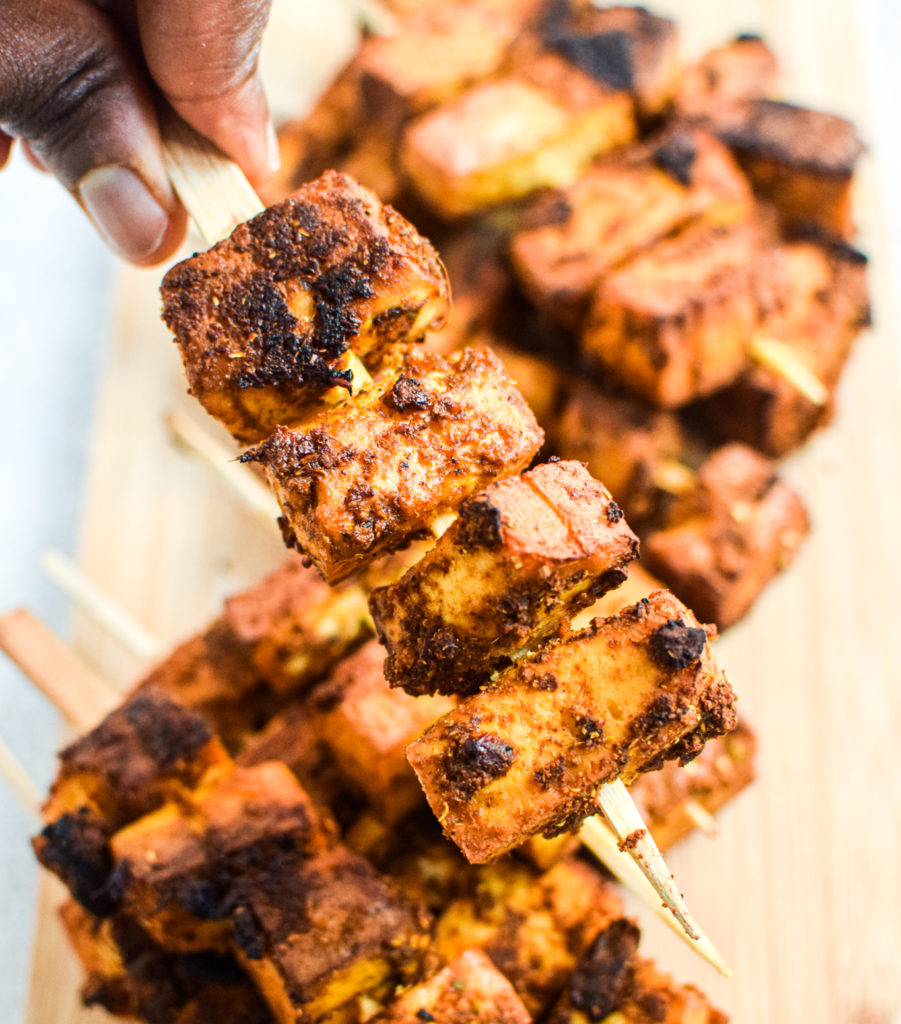
Mishkaki is traditionally grilled meat marinated in a flavourful marinade made and grilled over charcoal. You can find this food as popular street food in Tanzania and I believe also in Kenya. The meat is marinated with a variety of spices, which can differ based on the cool. Most marinades include ginger, garlic, coriander, curry powder, cumin, and black pepper.
Suya Tofu Skewers
Suya is a popular rub used to flavour grilled meats across West Africa. it is called suya in Nigeria; soya in Cameroun and chinchinga/tshintshinga in Ghana and Togo. In summary, It is a spicy peanut based dry rub packed with a ton of flavour, heat and spice. Specifically, the rub includes pepper, maggi/bouiloon powder, ginger and indigenous spices like grains of selim and calabash nutmeg. For more details about indigenous spices, please check out this blog post (click here). This recipe is exclusive to my E-book, which includes 11 other Ghanaian inspired recipes .

Ghanaian Soya Tofu
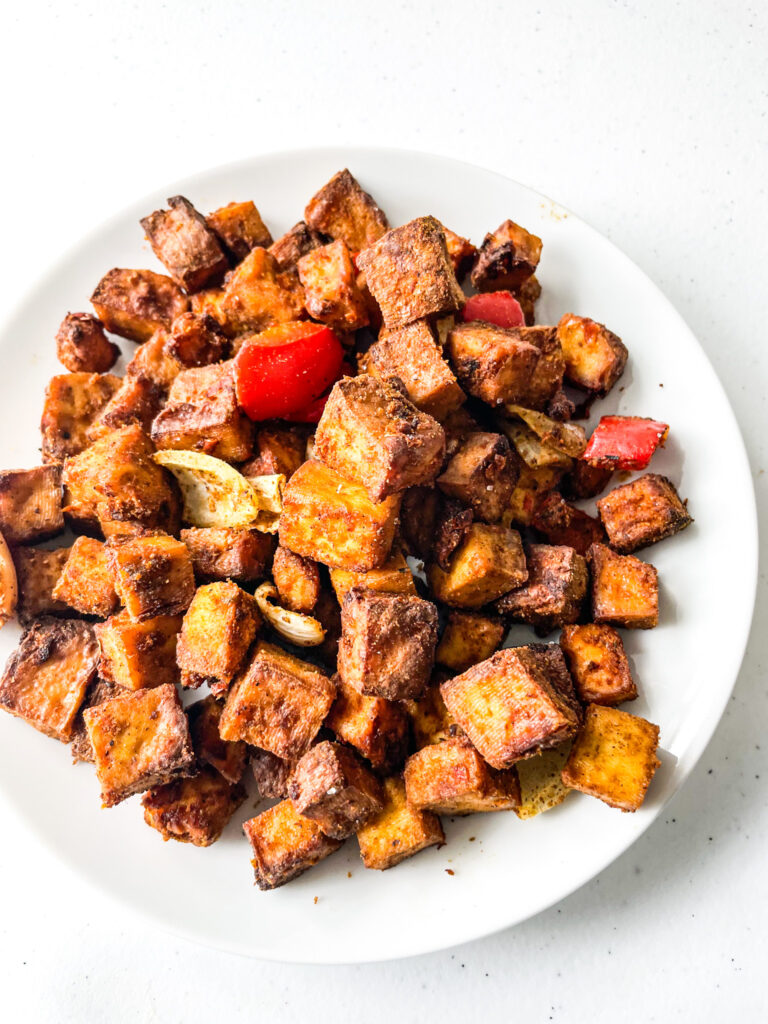
Soya, as tofu is known in Ghana, is made fresh from Ghanaian-grown soya beans. Soya/soy beans are grown along the savanna regions of West Africa and can be found in a number of our porridges as well as made into tofu. The process of making tofu mimics the process of making Wagashi (a West African soft cheese) and is a great alternative for people who do not eat dairy products. The soya is seasoned to look red like meat and then dowsed in a variety of dry seasonings.
Spice Crusted Tofu

This Herb Crusted tofu marinates the tofu in a flavourful and umami marinade and is crusted with a spiced crust. It has lots of crunches and a burst of flavour from the coriander seed, anise seeds and grains of paradise, bringing some delicious African flavours into the fold. This recipe is also a great way to introduce a few indigenous West African spices that can be great alternatives to common spices we know.
Nokoss Tofu
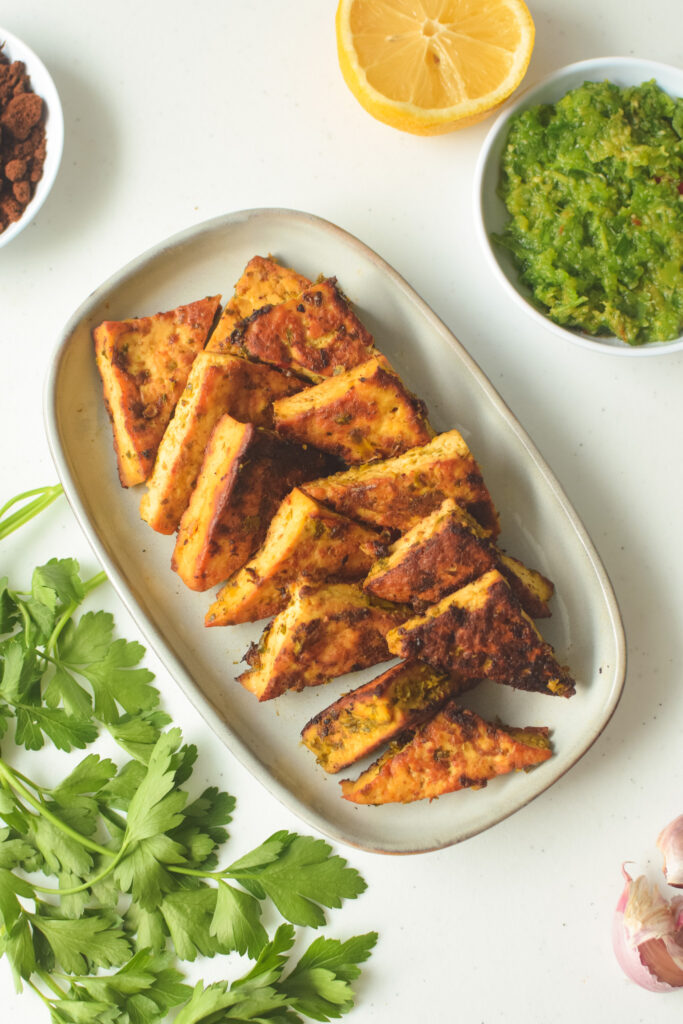
This Nokoss Tofu recipe is the product of my most recent exploration into Senegalese cooking. As I was researching the process to make Thieboudienne, I fell in love with the all-purpose green seasoning that is used to add fresh flavour to Senegalese dishes. This Nokoss tofu is seasoned with fresh herbs like parsley, with a bright citrus flavour and a lot of depth.

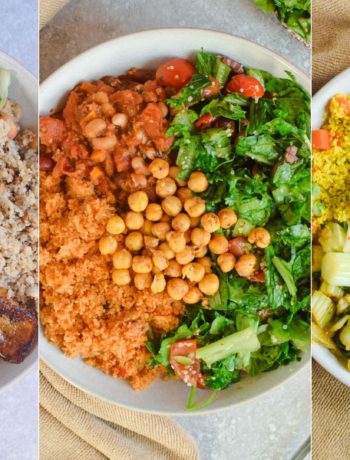
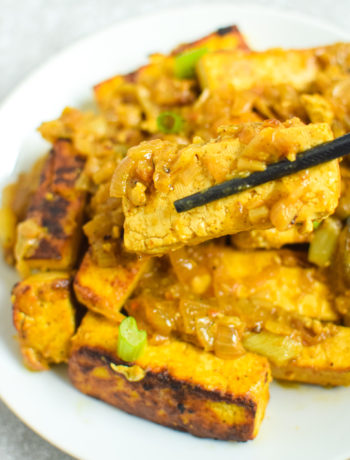
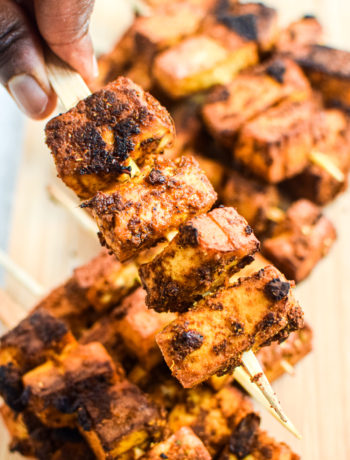
No Comments